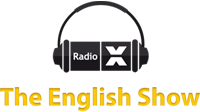Basel Fasnacht 2022
Basel Fasnacht is back! After a two-year break due to the pandemic, the carnival is going ahead next week from Monday, March 7th to Wednesday, March 9th. (Knock on wood!) This year, Fasnacht is going to be slightly different - the two Cortèges, or official parades, on Monday and Wednesday afternoon are cancelled, for example.
Instead, the city has decided to let Fasnacht go ahead in a 'looser' fashion than usual, with every group basically allowed to do whatever they want. They're calling it «drei Daag gässle», meaning «three days of walking along the narrow streets of the old part of town while playing your instrument».
Caveat: Most COVID measures have been lifted, but the virus is still circulating, so the Fasnachts-Comité, in consultation with the Basel-Stadt Health Department, recommends keeping to less populated areas and avoiding large crowds. If this is not possible, wearing hygiene masks is still the most effective measure to protect against infection. Furthermore, the Basel-Stadt Health Department advises against visiting crowded premises with poor ventilation. If you have a cold, please refrain from attending the carnival and stay at home instead. It is also advisable to wash or disinfect your hands regularly.
For updates (in German), head to the website of the Fasnachts-Comité.
Check out our dictionary of Fasnacht words here.
When: 7 - 9 March 2022, 4 a.m. to 4 a.m.
Where: Basel city centre
For more information on Fasnacht traditions and history, get Peter Habicht's book Lifting The Mask, which you can find at the Bider & Tanner bookshop. You can also find lots of information on Wikipedia, My Switzerland and BaslerFasnacht.info. The book and links will tell you about the differences between a Clique and a Gugge, what a Schnitzelbangg is, and how to avoid getting stuffed with confetti by Waggis.
Fasnacht starts with the Morgestraich at 4 a.m. on Monday morning, 7 March 2022. Trams and buses run at night, so you can get into town using public transport.
At exactly 4 a.m., the city's street lights are turned off and the fifing and drumming starts up. The only illumination comes from the lanterns.
After you've roamed the streets for a bit, head into a restaurant and have some traditional Fasnacht food: Mählsuppe (burnt flour soup - sounds disgusting, tastes delicious), Ziibelewaije (onion quiche) or Kääswaije (cheese quiche).
In normal times, the Cortèges with all the Cliques, Gugge and Waggis wagons start on Monday and Wednesday afternoon at half past 1 and last until about 6 p.m. These parades are cancelled this year. But plenty of groups will probably be walking around town until late at night.
Have a wander up Spalenberg, Gemsberg and along Nadelberg in the evening and soak up the Fasnacht vibe. As you're walking around Fasnacht, go into the various Cliquekäller (Clique cellars) for a drink or a bite to eat. Some of them are beautiful old cellars with vaulted ceilings, lined with lanterns. You'll find cellars along Bäumleingasse, Gerbergässlein, Nadelberg - in fact, pretty much everywhere, and they're signposted, so you can't miss them.
Fasnacht Tuesday is the children and family Fasnacht, beginning in the early afternoon. Head to the Münsterplatz for the lantern exhibition that starts on Monday night and lasts until Tuesday night. It's a lovely place to be, especially at night, with all the lanterns lit up and small Fasnacht groups providing the background soundtrack.
Thursday morning 4 a.m. signals the end of Fasnacht. Most of the big Cliques finish Fasnacht with one last rousing march just before the clocks strike 4 a.m., the group standing in a circle as they play their farewell to Fasnacht.



 This time on the Gadget Guru, Ian Ellery looks at how US-China tariffs could lead to lower electronics prices in Europe, with manufacturers shifting more stock this way. He also takes a closer look at
This time on the Gadget Guru, Ian Ellery looks at how US-China tariffs could lead to lower electronics prices in Europe, with manufacturers shifting more stock this way. He also takes a closer look at